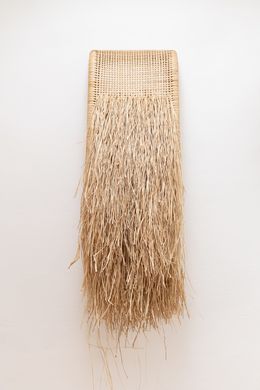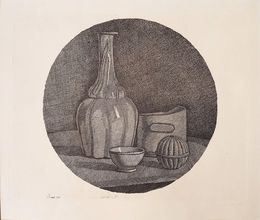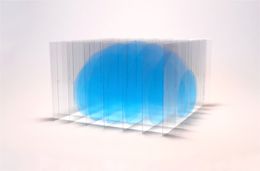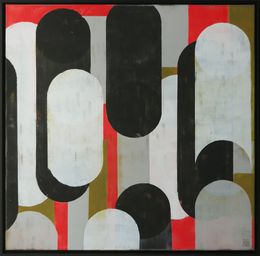
Meet the founder of Attico Design with Artsper!




Pictures 1, 2 and 4: Interior of Cristina Celestino / Picture 3 : Vases from the "Deriva" collection for Attico Design ©Cristina Galliena Bohman
For this new feature, Artsper is taking you to Italy, or more precisely to Milan, to meet Cristina Celestino. At the home of this talented architect and designer, nothing seems to be left to chance. She speaks to us passionately about her inspirations, her projects and her artistic universe. Meet the founder of Attico Design with Artsper!
1. Hello Cristina! You were born in Pordenone, Italy, and today you live in Milan where you set up your studio Attico Design. Do you think your cultural heritage and origins are present in your work? Is there still an “Italian touch" in the style of Cristina Celestino?
Yes, after my university studies at the IUAV in Venice, and several collaborations with Architectural and Design firms in Florence and Rome, in 2009 I finally moved to Milan where I founded my own brand Attico Design and in 2013 I opened my design studio.
I believe that the way you grow up, what you see, and what you learn during your youth profoundly shapes who you are, and your work depends on it. In my case, my long experiences in the most beautiful Italian cities, particularly Venice, continue to influence my imagery, which has strong roots in Italian architecture and design. Since university, I collect Italian design masterpieces from flea markets, the internet, and auctions, also monographic books about those I consider the greats: Carlo Scarpa, Gio Ponti, Gino Sarfatti, Joe Colombo, Sottsass, and Nanda Vigo.
In my interiors and products, I think there is an inevitable “Italian touch", but I try not to over-emulate it; I believe I found my way of distinguishing myself. Perhaps the most representative example is my interior project of the Experimental Cocktail Club for Il Palazzo Experimental in Venice. The juxtaposing colors and materials refer to the idea of stratification, a theme very important to Venice: a multitude of interventions from all ages, materials, and colors that create a unique harmony. The end results work successfully as a single project.
The project is a mix of references ranging from Palladio (mirrors with thermal window shapes, a wall with a door and oblò recall the Palladio Serliana), to Carlo Scarpa (wall panels in Marmorino framed by black metallic profiles), to the use of other Venetian references: e.g. polychrome marbles (on the countertop), antique mirrors, torchon (rope moldings) that is a decorative element found on many historic buildings in Venice. They may also be present on the original partition of this palace. I have used the torchon in different materials, like in glass for the frame of the big wall mirrors, recalling the old Venini mirrors by Scarpa, and in lacquered wood for the frame of back-bar furniture.


"Atomizers" collection for Attico Design ©Cristina Galliena Bohman / Portrait of Cristina Celestino ©Simon171
2. You seem to always make a point of breaking down borders between fashion and design, why is this?
Maybe because with my designs, I always try to be fresh and to reinvent my style continuously. But, always remaining inline with my self and my inner guidelines.
3. Which artists or artistic movements serve as sources of inspiration to you?
It is never the same, it always changes. Right now, I am quite obsessed with Paolo Scheggi and the search for a new spatiality and the investigation of the '60s and '70s perception.
4. You have notably collaborated with Maison Matisse on a collection of design objects in homage to the artwork Intérieur aux aubergines. How have you been inspired by Matisse's work? Why did you create these objects ?
Henri Matisse's use of color and the painting's palette was the unifying element that runs through the entire project, so it took a completely new approach to Matisse's work to transform it from a two-dimensional canvas into a decorative object. Though he was a collector of objects and a lover of the decorative arts in general, Henri Matisse never drew a product strictly speaking. However, many of his paintings depict interiors, so through his paintings Matisse expressed a spatial and architectural vision that goes beyond the simple object and is informed by color, empty spaces, interiors and exteriors, textures and materials.
This collection was developed around three themes.
The textures drawn by Matisse, often all-over, are a combination of geometric shapes and organic forms, layers of signs and references that play with scale effects, orientalism and abstract floral designs.
The window is also a theme that raises the question of the relationship between inside and outside. We are in an interior, but we breathe the air of the landscape that is portrayed. The idealized exterior becomes an integral part of the composition. In some famous paintings, there is the feeling of being in a garden, both in the type of decorative elements depicted and by the presence of greenery (often bunches of colorful flowers or climbing plants).
Finally, soft features and the outline of a decoration introduce an idea of femininity and intimacy that is reflected in arrangements of fruit, vegetables and pottery, or a dressing table with rounded edges, a folding screen that juxtaposes its pattern with a floor-to-ceiling all-over pattern.


Interior of Cristina Celestino ©Helenio Barbetta Chiara Dal Canto Living and ©Cristina Galliena Bohman
5. You have also done multiple collaborations in the fashion world and notably within haute couture. Why does this area particularly inspire you?
My designs always come from research into my passions: architecture, history of design, nature (a catalog of colors and texture), jewelry (offering a high level of aesthetic), fashion (an exploration of color and attitude).
Indeed, I am fascinated by the world of fashion. It moves quickly, in terms of research, freshness, but it's always coherent. I am proud to have collaborated with Italian icons such as Fendi and Sergio Rossi.
6. What kind of art collector are you? Which works of art can be found in your home?
Mostly objects, furniture, decorative objects, in particular, I love collecting lamps: I have a lot of them in my house and in my office. They are all designed by great Italian Designers, one of my favorites is Chiara designed by Mario Bellini for Flos, recently put back in production.
7. Which artistic venue or cultural center anywhere in the world do you find the most inspiring?
A visit to Fondazione Prada is always worth it. I find the exhibitions very inspiring and well studied, in terms of content and of careful attention to detail with the set-up. In Milan, another great space for culture, particularly for my field, is the Triennale di Milano! You definitely come home with enriched cultural baggage.
8. And finally, what advice would you give to someone who wants to bring a touch of freshness to their interior without changing everything?
Sometimes, when I feel blue and I need a little change, I like to paint some of the walls in my house. It is very refreshing both for you and your house, even though it is a small thing.
Or just buy flowers and plants, it's always a good idea!
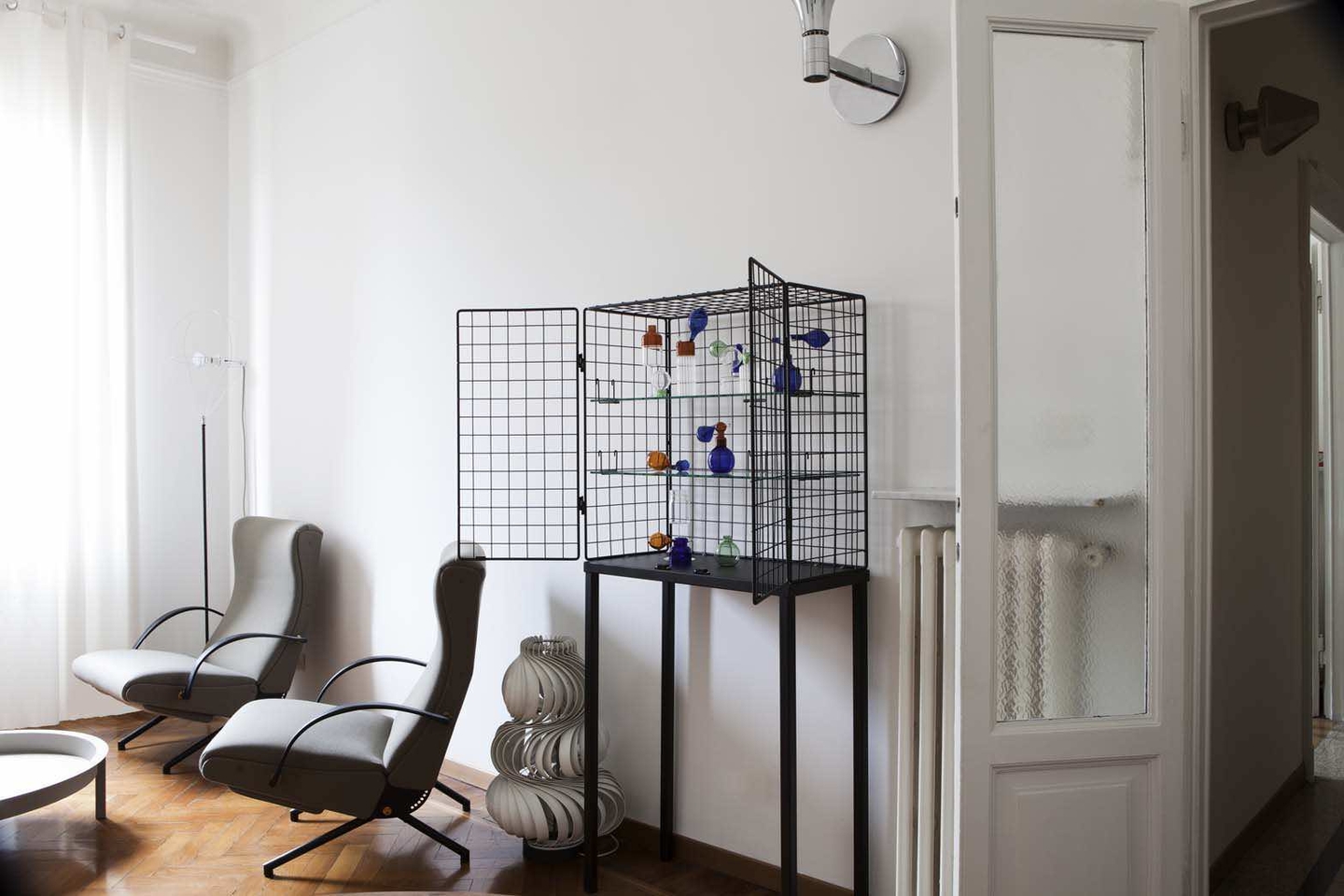
Interior of Cristina Celestino - "Les Volières" cabinet by Seletti decorated with the "Atomizers" collection by Attico Design - ©Cristina Galliena Bohman
Their favorite artworks
